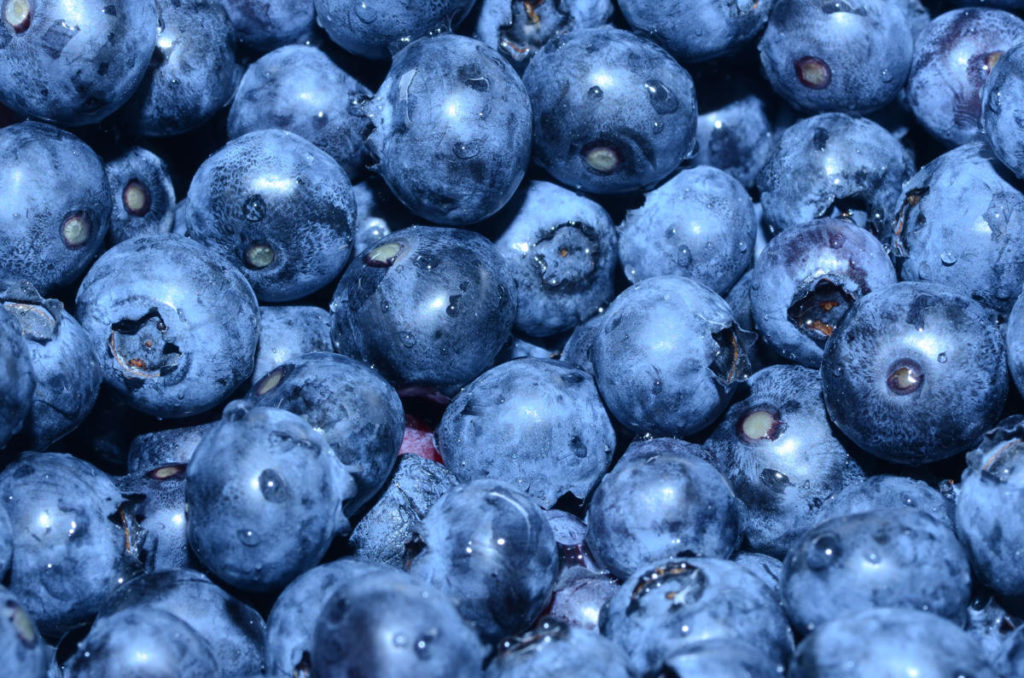Frozen blueberries are convenient if you love using the fruit to bake, cook, as an addition to your food or you just want to have some on hand, so that you can access the fruit year round
You will find that most people use the frozen fruit in waffles, pancakes, pies, smoothies, oatmeal and a variety of other dishes.
In this article, we show you the different options you can use to thaw blueberries that will be used in baking or cooking, along with how to defrost them quickly if you are in rush.
What You Need to Know Before Thawing Frozen Blueberries

Freezing fresh blueberries allows you to use the fruit later throughout the year when they are not readily available.
While the frozen fruit can be used as is, sometimes the blueberries may need to be thawed, depending on the recipe you are using to bake or cook.
Before you thaw your fruit for use, there are a couple of important things that you should be aware of.
They Will Be Soft/Soggy: When you thaw frozen fruit, it is inevitable that it will become soft and mushy.
According to the University of Montana Extension, fruits like blueberries are much softer when frozen and thawed.
“When the water freezes, it expands and the ice crystals cause the cell walls to rupture. Consequently, the texture of the produce, when thawed, will be much softer than it was when raw.”
With the change in texture of defrosted blueberries, you often find that it is often used baking, to make juice or as an add in with salads, yogurt and pancakes
Handle With Care: Because of the fruit’s texture change when thawed, it is important to handle them gently so as and to help them keep their shape.
Use Them Quickly: Once you have thawed blueberries, it is best to use them within two days.
If you are interested in cooking with frozen blueberries, the Blueberry Council has a whole section dedicated to cooking with frozen blueberries.
They highlight different dishes that are perfect for the frozen fruit.
The Best Way to Thaw Blueberries

There are a couple of methods that can be used if you are looking defrost blueberries that have been frozen.
We will take a look at the different options below, highlighting the pros and cons in using each one.
Overnight in the Refrigerator: The Best Way to Defrost Blueberries

Ideally, thawing blueberries overnight in the refrigerator is the best option to use.
It is a slow defrosting process, however, you will have a higher chance of the fruit retaining its texture and flavor once it is thawed out.
Steps
- Place the frozen blueberries in a bowl or container and cover with plastic wrap.
- Let the berries sit overnight in the refrigerator for about 8 hours overnight if you plan on using with them to cook or bake.
- If you plan to eat them whole, thaw for four to six hours so they are still partially frozen and firm.
Pros: Helps to maintain texture
Cons: Takes a long time, not a good method to use if you need the fruit thawed quickly.

Cold-Water Bath: A Quick Defrosting Method
It is generally recommended to thaw frozen blueberries overnight in the refrigerator. However, if you need them thawed quickly, the cold-water bath method is quick option to consider.
Steps
- Place the frozen blueberries in a bowl or container and fill with cold water.
- Let the fruit sit for about five minutes, then check to see if they are still frozen.
- If you find they are still solid, you can drain the container and add fresh cold water to complete the process.
Please Note: You should not use hot or warm water to thaw the frozen blueberries, as it creates an environment for the growth of harmful bacteria.
The heated water will also cause the blueberries to shrivel and release their juices, significantly changing the fruit’s taste and texture.
Pros: Quick way to defrost blueberries.
Cons: Can cause the fruit to be a mushy if left in the cold-water bath too long.
Microwave: Is This a Safe & Quick Way to Defrost Blueberries?
While placing the fruit in a cold water bath is a quick way to defrost them, we have many people asking if the microwave is a quick and safe way to thaw blueberries.
Albert Cornelius Doyle, former M.S. in Epidemiology and Health Policy at Harvard School of Public Health answered that question of the safety in thawing fruit on the popular question and answer site, Quora.

He stated that “Yes, and that’s how a great many people get their berries out of season. The thing to be careful about is over-cooking”
Microwaves are used often to thaw food and when dealing with frozen fruit, it can be used, but you need to be careful, as you do not want to cook them.
Steps:
- Take the frozen fruit and place in a microwave safe bowl or container.
- Cover the plate or container with a paper towel.
- Use the defrost setting on the microwave and zap the berries for 15 seconds. You will want to keep the time to short intervals, as you do not want to heat them up too much
- After 15 seconds, check to see if they have thawed, if they’re still a bit frozen, you can put them in the microwave for another 5 seconds.
Please Note: Cooking times with different brand microwaves will vary. What is 15 seconds for one, might be 20-25 seconds for another.
It is a good idea to test small batches at first, to get an idea of how long the thawing process will take before putting in a large batch.
Pros: Quickest way to thaw blueberries if done properly.
Cons: If left in the microwave too long, you could end up with soggy fruit.
Wrapping it up
While it is best to use fresh blueberries, they sometimes aren’t available all-year.
Frozen blueberries solve that problem and they are the perfect option to eat, cook or bake with.
There are times when you may need to thaw the fruit and there are a couple of options that will get the job done.
You can either let them sit in the refrigerator overnight, use a cold-water bath or the microwave to thaw the fruit.
Each method has their own pros and cons, but the most important thing to note is to thaw the fruit properly, so that you do not end up soggy unusable berries.